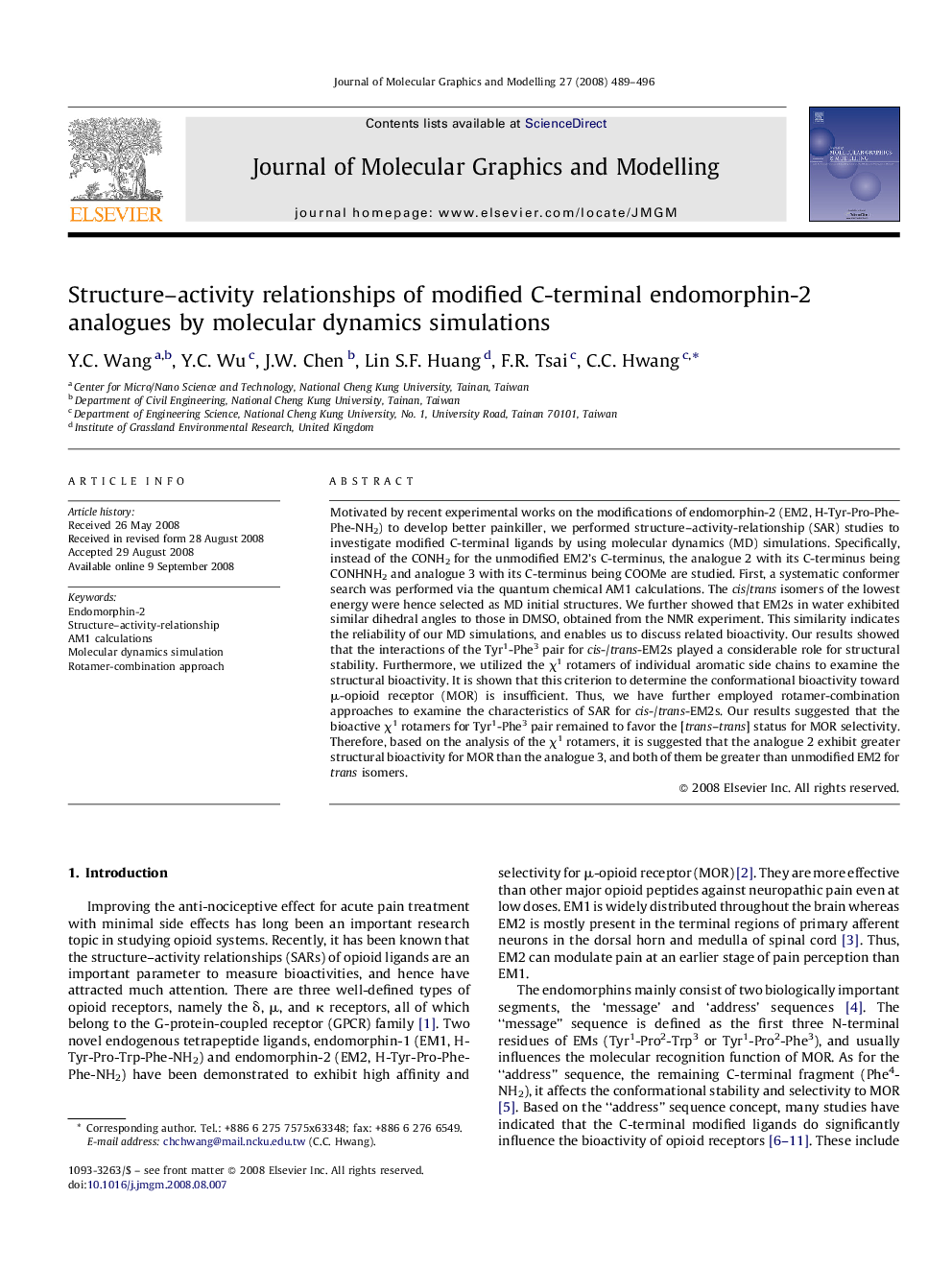| Article ID | Journal | Published Year | Pages | File Type |
|---|---|---|---|---|
| 443812 | Journal of Molecular Graphics and Modelling | 2008 | 8 Pages |
Motivated by recent experimental works on the modifications of endomorphin-2 (EM2, H-Tyr-Pro-Phe-Phe-NH2) to develop better painkiller, we performed structure–activity-relationship (SAR) studies to investigate modified C-terminal ligands by using molecular dynamics (MD) simulations. Specifically, instead of the CONH2 for the unmodified EM2’s C-terminus, the analogue 2 with its C-terminus being CONHNH2 and analogue 3 with its C-terminus being COOMe are studied. First, a systematic conformer search was performed via the quantum chemical AM1 calculations. The cis/trans isomers of the lowest energy were hence selected as MD initial structures. We further showed that EM2s in water exhibited similar dihedral angles to those in DMSO, obtained from the NMR experiment. This similarity indicates the reliability of our MD simulations, and enables us to discuss related bioactivity. Our results showed that the interactions of the Tyr1-Phe3 pair for cis-/trans-EM2s played a considerable role for structural stability. Furthermore, we utilized the χ1 rotamers of individual aromatic side chains to examine the structural bioactivity. It is shown that this criterion to determine the conformational bioactivity toward μ-opioid receptor (MOR) is insufficient. Thus, we have further employed rotamer-combination approaches to examine the characteristics of SAR for cis-/trans-EM2s. Our results suggested that the bioactive χ1 rotamers for Tyr1-Phe3 pair remained to favor the [trans–trans] status for MOR selectivity. Therefore, based on the analysis of the χ1 rotamers, it is suggested that the analogue 2 exhibit greater structural bioactivity for MOR than the analogue 3, and both of them be greater than unmodified EM2 for trans isomers.
